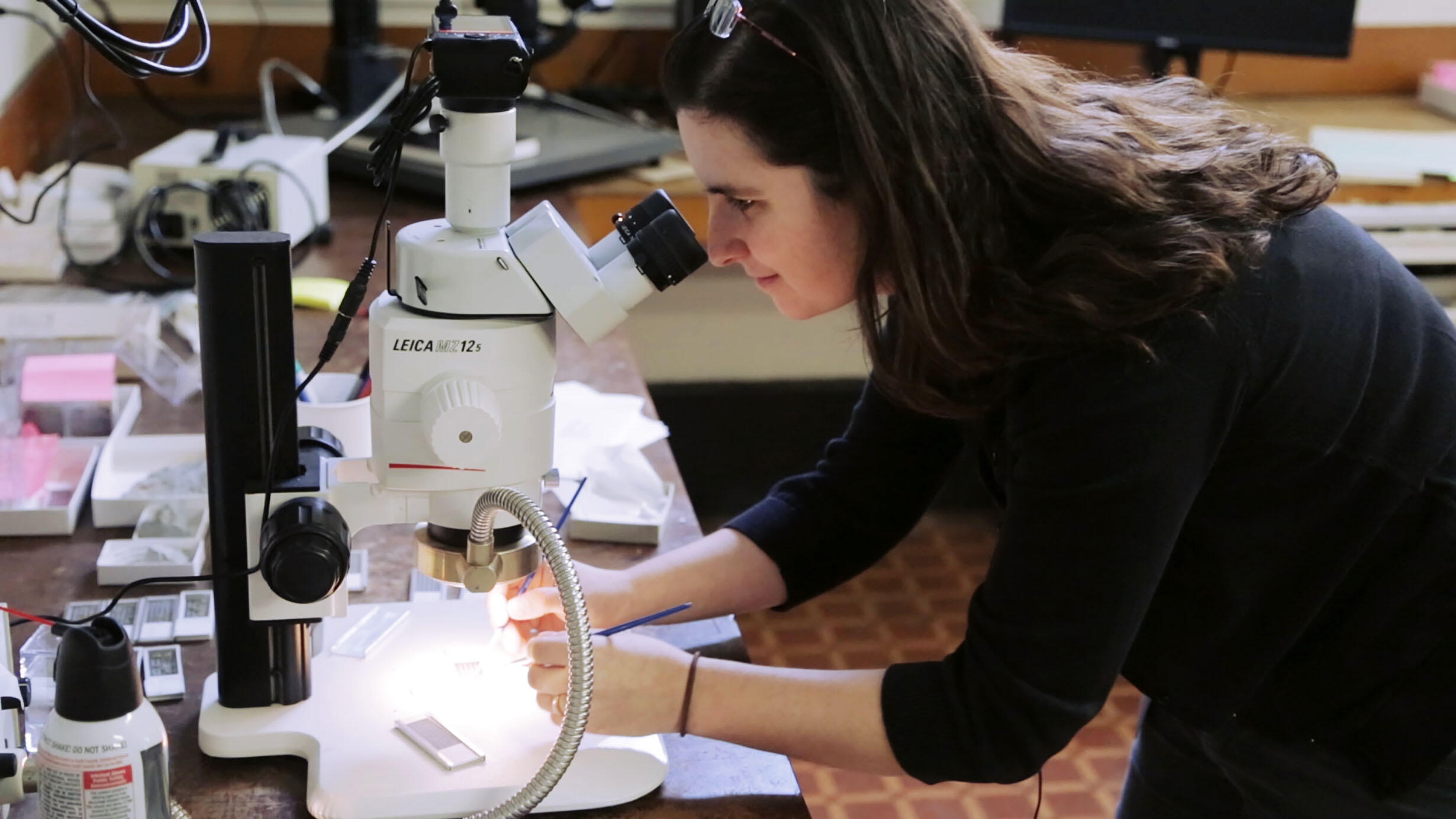AMNH Paleontologist Melanie Hopkins Awarded National Science Foundation Career Grant
 Associate Curator Melanie Hopkins studies the evolution of trilobites, extinct arthropods that went extinct 250 million years ago.
Associate Curator Melanie Hopkins studies the evolution of trilobites, extinct arthropods that went extinct 250 million years ago.© AMNH
American Museum of Natural History Associate Curator Melanie Hopkins has been awarded a prestigious five-year National Science Foundation (NSF) CAREER grant for her project to study trilobite evolution and to work with the Museum’s Master of Arts in Teaching (MAT) Program to develop a new professional training initiative to introduce MAT alumni who are now Earth science teachers in New York State to fossil field work at local dig sites with the goal of helping teachers use fossils to engage middle- and high-school students. The National Science Foundation CAREER awards support junior faculty who exemplify the role of teacher-scholars through research, education, and the integration of education and research within the context of the mission of their organizations.
The grant funds Hopkins’s research investigating the evolution of trilobites—extinct arthropods that lived for almost 270 million years before they disappeared during the largest mass extinction in Earth’s history 250 million years ago. The teacher development part of the project, called the Earth-science Reciprocal Learning Year (EARLY), will include graduates of the Museum’s MAT Program who are now teaching Earth science in high-needs middle and high schools in New York State. Giving teachers first-hand experience of how paleontology is practiced in the field will helps them educate their students in scientific practices and show how scientists reconstruct and date events in Earth’s history.
“A growing body of research indicates that immersive out-of-school learning experiences strengthen students’ ability to construct science understanding and can influence future career choices,” says Dr. Hopkins. “The EARLY initiative seeks to support new teachers’ work with their students to deepen understanding of the work of scientists, build on Earth science content, and engage with teachers and students from other New York schools. The initiative also allows the new teachers to facilitate learning from a place of strength because of their expertise and knowledge of the Museum.”
The key parts of the EARLY initiative includes:
- Field excursion to Early Paleozoic outcrops along the New Jersey/New York border. Teachers will focus on ancient marine environments, trilobite evolution, and major events in Earth history including the Cambrian and Ordovician Radiations and early Paleozoic extinctions.
- Field excursion to Penn Dixie Fossil Park and Nature Reserve, located just south of Buffalo, New York. This 54-acre site was ranked as one of the top fossil parks in the United States, according to a study by the Geological Society of America. Since visitors are welcome to keep any fossils they unearth, the site provides an excellent resource for teachers to build paleontological teaching collections that include some of the quintessential fossils of New York State: brachiopods, trilobites, bryozoans, crinoids, cephalopods, bivalves, and gastropods.
- Follow-up workshop with participating teachers and their students back at the Museum. The initiative offers a new paleontology-focused experience that includes a fossil lab using specimens collected by the teachers during their field trip to Penn Dixie, a teen “SciCafé” with discussions with scientists in an informal setting to learn about their research and how it relates to students’ lives, a behind-the-scenes tour of the Museum’s fossil collection, and teacher-facilitated learning in Museum galleries such as the Milstein Hall of Ocean Life and the Hall of New York State Environment.
The program will serve 10 teachers and approximately 50 students per year, for a total of 50 teachers and 250 students over the five-year grant period.
The Museum’s MAT program in Earth science began as a pilot in 2011 as the first freestanding museum-based master’s degree program to prepare science teachers in the United States. Authorized by the New York State Department of Education, the MAT program addresses a critical shortage of qualified science teachers in New York State, particularly in high-needs schools with diverse populations, by providing a specialization in Earth science for teachers of grades 7–12. Working in partnership with schools in New York City and the region, the MAT program is developed and delivered in the context of a natural history museum and integrates academic theory and learning with application in a school setting. To date, the program has produced 94 MAT graduates who are teaching 9,000 students in high-needs New York State schools.